#ottoman harem
Text






#history#magnificent century#muhteşem yüzyıl#ottoman#firuze hatun#Firuze#belly dancer#Dancer#ottoman harem#harem women#history of women
190 notes
·
View notes
Text



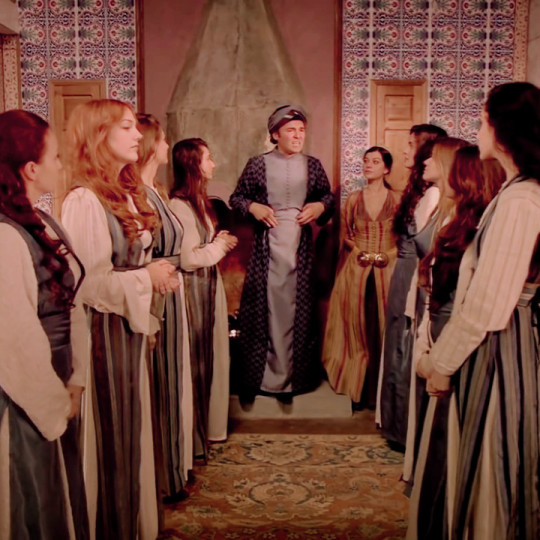

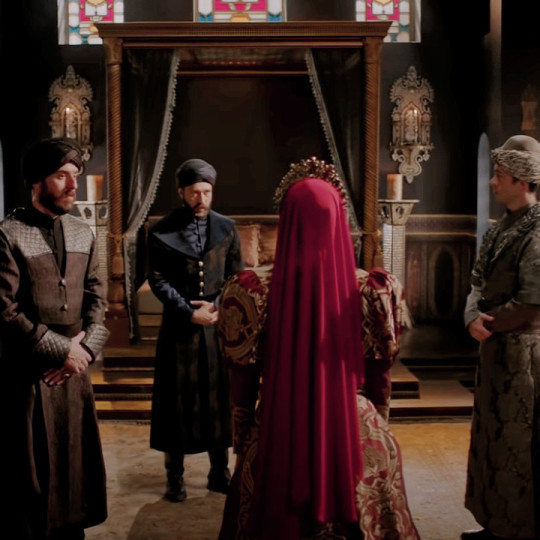
“Because there's no other place on earth, where you enter a slave and become a sultana who rules the world.”
“The haseki, a slave concubine and no blood relation to the reigning sultan, ranked higher than the sultan’s own sisters and aunts, the princesses of the dynasty. Her elevated royal status derived from the fact that she was the mother of a potential future sultan.
Kösem was the last of the colorful and influential hasekis of the “sultanate of women”. Henceforth, the position of haseki would lose its special status. The presence of more than one haseki was a significant change in the reigns of Murad and Ibrahim, signaling that the age of the favorite was coming to an end. In this period the meaning of the title haseki begins to shift from a single “favorite” to something more general like “royal consort”, similar to the earlier khatun.”– Leslie P. Peirce - The Imperial Harem: Women and Sovereignty in the Ottoman Empire
#magnificent century#haseki hurrem sultan#hürrem sultan#mcedit#sultanas#muhteşem yüzyıl#hurrem sultan#nurbanu sultan#kosem sultan#nurbanu#safiye sultan#halime sultan#kosemedit#muhtesem yuzyil kosem#ottoman history#ottoman harem#ottoman empire
265 notes
·
View notes
Text
Gülçiçek Valide Hatun
One of the first enslaved imperial mothers to have a tomb dedicated to her; Gülçiçek Valide Hatun.

Same as her date of birth, her birth name is unknown though it is sometimes suggested to be Maria.
Though the year of her capture is not documented, nor how she ended up in the Ottoman imperial harem there is a legend about her person; that she was never a concubine but instead a wife of Murad I.
The tale goes as such...
Maria was the young noble Byzantine widow of Aclan Bey and the mother of Yakhsi Bey. She was captured in 1344 when Orhan Ghazi captured the principality of Karasi. After 15 years of widowhood, the troubled mother of Murad: Nilufer, who on her end suggested many suitors for her, all of whom she refused.
Eventually, Murad offered himself and she accepted, changing her name to Gülçiçek. - ( " The European Sultanas of The Ottoman Empire " by Anna Ivanova Buxton )
The tale seems highly improbable as the Ottoman rulers, do not have a strong history of marrying widows, especially ones who have been captured, and thus are considered slaves.
When looking at her name origin Gülçiçek means "rose blossom" in Turkish, meaning she was of slave origin and a convert.
The Gülçiçek in kinship with Aclan Bey and Yakhsi Bey is most likely different than the consort of Murad I, as the dates do not match.
Gülçiçek became Valide Hatun in 1389, after her son ascended the throne upon the death of his father; Murad, sometime after the battle of Kosovo. She will served as Valide Hatun from 1389 to 1400, upon her death.
Not much is known about her relationship with her sole child; Bayezid. The only thing I found and noticed is that she is not mentioned as one of the attendees of Bayezid's wedding to Devletşah Hatun in 1381. Instead, his unnamed governess was in attendance. - ( " Bu Mulkun Sultanari " by Necdet Sakaoglu, pg 54, narrated passage by Ashikpasazade )
An interesting point about the mosque in which she was buried is located in a Greek neighborhood in Bursa called the " Night Quarter ". This also indicates her Greek origin, and that she was still related or saw herself as a Greek woman which is why she was buried in this quarter; which had yet to be Islamized at the time. - ( Bu Mülkün Kadın Sultanları by Necdet Sakaoglu )
#history#hatun#valide hatun#ottoman history#Gülçiçek hatun#gulcicek hatun#bayezid I#Murad I#Ottoman harem#bayezid the thunderbolt#Yildirim bayezid#geology#Gulciek Valide Hatun#gulcicekvalidehatun
6 notes
·
View notes
Text
















As we have studied Ibrahim’s career, we have seen the vast power that he gradually gathered into his hands, and we have noted the amazement with which European legates listened to his own accounts of his standing in the state. He was practically the ruler of the Ottoman empire, but there was one fact that he forgot; he was absolutely at the disposal of the sultan and could be disgraced or executed at the latter’s caprice—he was but the shadow of the "Shadow of God on Earth." - Ibrahim Pasha: Grand Vizir of Suleiman the Magnificent by Hester Donaldson Jenkins
#Muhteşem Yüzyıl#Magnificent Century#mcedit#weloveperioddrama#perioddramaedit#period drama#perioddrama#historical drama#Muhtesem Yuzyil#ottoman history#ibrahim pasha#history#Power and Pride#You Need to Follow the Rules of the Harem#How Dare He?#Permutations#Prophetic Dream#Captivating Curves#A New Round of Confrontation#Death Trap#Deceitful Truths#Awkward-Sultana
62 notes
·
View notes
Text
u know, once someone has pointed out the orientalism in most of fandom's depictions of jotun!loki you can never unsee it.
#it was always easy enough to spot in fanart but in fic you can't *see* it so it's maybe a bit less obvious? or else i'm just a bit thick.#but he's always in diaphanous silk 'bellydancer'-style garments and covered in gold hoop jewellery isn't he? D:#and none of the *other* jotuns get dressed like that so that plays even more into the 'exotic flower full of delicate eastern promise' thin#he's dressed to lounge around in a 19th century englishman's interpretation of the ottoman sultan's harem for some reason#(i've been reading some Thorki Arranged Marriage Fics of late and oh. my. god. can you find another less racist aesthetic pls?)#also semi-aside but i only just noticed fandom fixed the lack of jotun women in canon by just making them all Fantasy Hermaphrodites#even if someone breaks convention and gives Loki a birth mother it's usually a he/him one and like...#on one hand this looks Progressive but on the other it conveniently means nobody has to add any women to the story#that might actually explain why i felt weird when i was attempting a Jotunheim AU and i invented some women for it?#like oh my god you can't make his mother a woman what is this mary-sue self-insert nonsense?!#(i probably won't ever actually manage to write that fic but at least the planning stage was kind of fun)
17 notes
·
View notes
Text
lol, hafsa saying her one wish from god is to die as soon as possible so she won't live to see how hürrem ruins suleiman... the bombastic and dramatic is in the genes
#drama runs through the mc-verse ottoman dynasty's veins#and when the consorts join the harem the drama enters their cells too#muhteşem yüzyıl#muhtesem yuzyil#hafsa sultan#ayşe hafsa sultan#sultan süleyman#hürrem sultan#mc tag#i ramble
7 notes
·
View notes
Text

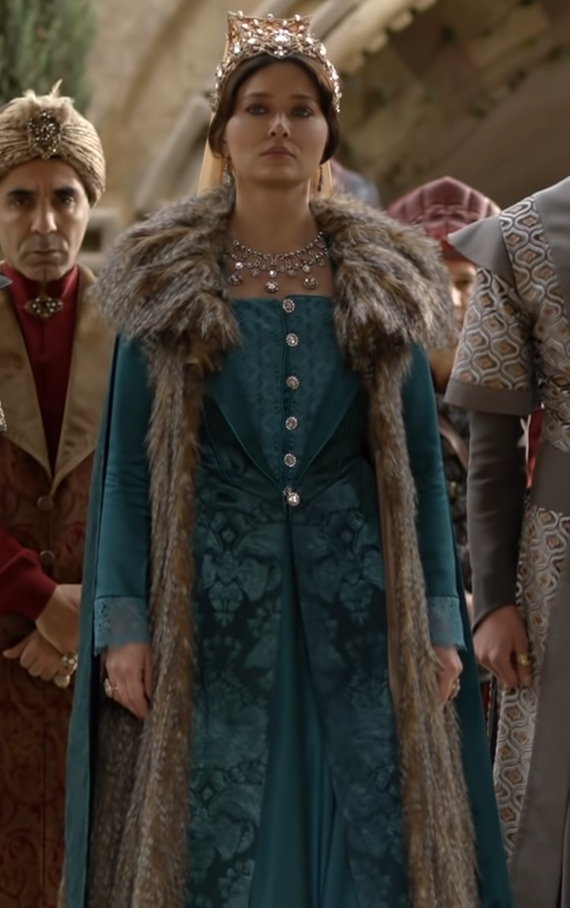

This brown fur coat with its distinct collar was first worn by Safiye Sultan in the fourth episode of the first season of Magnificent Century: Kösem. Kösem Sultan wore it again in the twenty-fourth episode of the following season.
The coat is also briefly seen on Mara Branković in the first episode of the first season of Netflix docutainment series Rise of Empires: Ottoman.
#Magnificent Century Kösem#Muhteşem Yüzyıl: Kösem#Magnificent Century Kosem#Rise of Empires: Ottoman#period drama#costume drama#historical drama#Safiye Sultan#Safiye Sultan (Harem of Murad III)#Kösem Sultan#Kosem Sultan#Mara Branković#Mara Brankovic#recycled costumes#reused costumes
46 notes
·
View notes
Text
Episodes 13 and 14 be like

Ngl you can't talk with the guy anymore.
It also looks like he's bored out of his mind after Rhodes and he's just taking it out on everyone.
"No you guys don't get it, if your love is impeded, your sadness will jeopardize the most important thing in the palace."
"What is it, Your Majesty?
"MY FKING MOOD!!!"
#magnificent century#muhteşem yüzyıl#magnificent tumblring#magnificent memes#sultan suleyman#ottoman history#dizi review#“you think I am so cruel?”#honestly bro#you literally trolled me with a death threat to make me vizier#I wouldn't put it past you#could Halit's eyelids be any lower?#how does he even see at this point#RIP Ferat Pasha btw#also gaslighting in the harem has reached critical levels#WHY are Nigar and Sumbul not talking to each other about freaking Sadika tho?????#also the girl can't help smiling#seriously stop
27 notes
·
View notes
Text

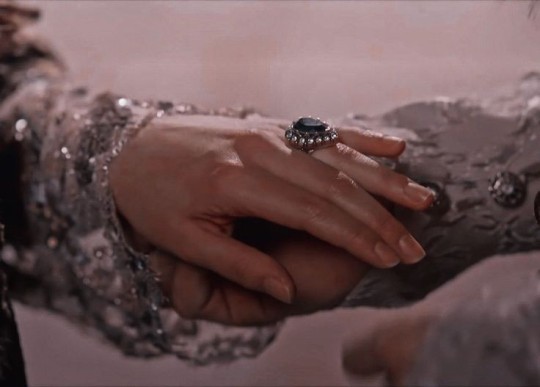
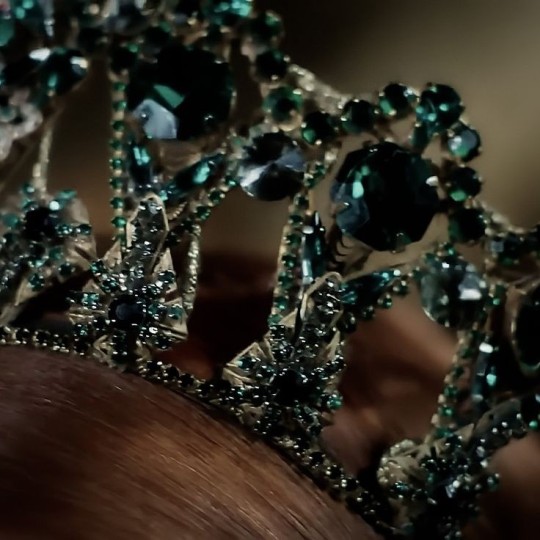
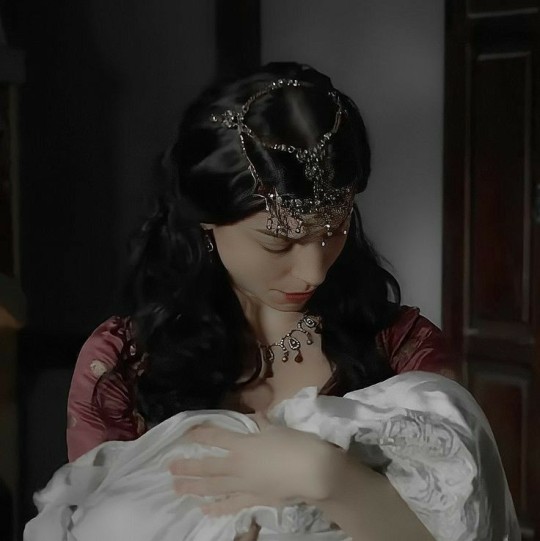


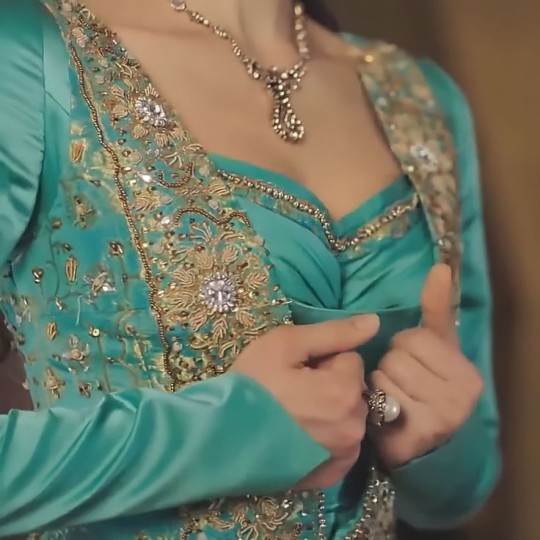



#history#sultanate of women#Sultanate#ottoman harem#ottoman woman#ottoman history#magnificent century#muhteşem yüzyıl#ottoman#sultanas#ottoman sultanas#ottoman valide#valide sultan#baş haseki turhan sultan#turhan sultan#magnificent century kosem#valide kosem sultan#Kosem sultan#My favorite#haseki hurrem sultan#hurrem sultan#safiye sultan#My edit#Power and blood#haseki nurbanu sultan#nurbanu sultan
35 notes
·
View notes
Text
WHAT HAPPENED TO COUNTESS MARIA OF SALONA?
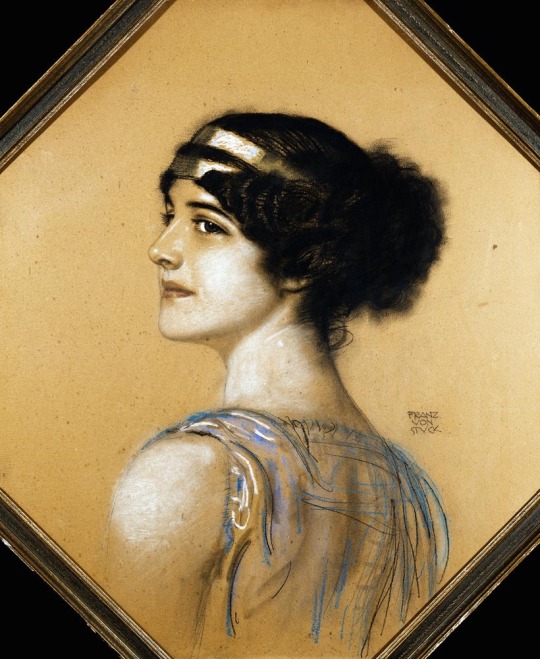
Maria Fadrique was born around 1370, the daughter of the last Catalan Count of Salona, Don Louis Fadrique, and his Greek wife, Princess Helena Fadrique, also known as Helena Kantakouzene or The Despina, Helena Asenina.
Not much information about her early childhood has been preserved. We do know that she grew up as an only child to the noble couple and was likely prepared and claimed as the only heir to the County of Salona.
In 1382, at the age of 12, she lost her father and became the Countess of Salona in her own right. However, due to her age, she was deemed too young to manage the county, so her mother, the Dowager Countess Helena Fadrique, took charge as regent. That same year, she was betrothed to Bernat Hug, a son of Felip Dalmau, but the betrothal was annulled.
Despite reaching the age of maturity in 1386, at 16, an age when she was now deemed fully capable of managing the County of Salona, her mother remained in power over all state affairs, and Maria had yet to step a toe into the world of politics. That same year, her mother betrothed her to a son of the Serbian Emperor Symeon Uros for political reasons, but this betrothal, like the first one was annulled. That same year, she was betrothed to an alienated associate of the King of Aragon, but the wedding never took place.
From the years of 1388-1391, Helena refused to repay damages to a Venetian citizen who suffered the loss of property aboard a ship from Ancona by her late husband, Don Luis Fadrique, in 1380. This made her mother very unpopular with Venice.
Her mother was quite hated by the people, who most likely would have preferred Maria to take charge over state affairs, but this never happened. Even at the age of 20, Maria had not taken charge over state affairs. This decision to keep the Dowager Countess in charge would eventually cause their deaths.
Though Necdet Sakaoğlu in his work “Bu Mülkün Kadın Sultanları” claims she was betrothed to Manuel II in 1393, I have not seen another source to confirm this claim.
In this same work, Sakaoğlu tells the story of the capture of Maria and her mother in late 1393 or early 1394. “Turkish soldiers captured the Frankish ship that was bringing Maria to Istanbul in the Dardanelles and captured its occupants.” - Necdet Sakaoğlu, “Bu Mülkün Kadın Sultanları,” pg 88.

Upon meeting the beautiful and affianced Countess, Sultan Yildirim Bayezid Han was smitten with her, and both the mother and the daughter were brought to his harem in Edirne, and Maria became his concubine.
That same year in 1394, Helena died, but it is not clear if it was due to an execution or other reasons. According to Laonikos Chalkokondyles, the Countess Helena disgraced herself and brought shame upon the people of "Delphi" by committing her authority into the hands of her lover, a priest called Strateus, for which reason the Archbishop of Larissa denounced her to the Basileus (Sultan) and gave him the pretext for taking over the County of Salona. - The Byzantine Family of Kantakouzenos (Cantacuzenus) Ca. 1100-1460: A Genealogical and Prosopographical, pg 161.
As for Maria, she was executed a year later in 1395 after Bayezid found her unworthy of him, and eventually lost interest in her. However, this reason seems highly improbable.
When Bayezid lost interest in her, he wouldn’t have executed her but instead discarded her or even sent her away to the old palace in Bursa. The reason for her execution must be something else, either she was executed for political reasons or she went against the rules or even committed a crime. Nonetheless, it is highly unlikely for a Sultan to execute a concubine because he lost interest in her.
( Sources: The Byzantine Family of Kantakouzenos (Cantacuzenus) Ca. 1100-1460: A Genealogical and Prosopographical, Necdet Sakaoğlu, “Bu Mülkün Kadın Sultanları".)
#geology#Hatun#royalife#BayezidI#Bayezid I#sultan bayezid#Bayezid The Thunderbolt#Bayezidthethunderbolt#Yildirim Bayezid#YildirimBayezid#Yıldırım Beyazıt#YıldırımBeyazıt#Assembly#Sultan Yildirim Bayezid Han#Countess Maria#Maria of Salona#Countess Maria of Salona#Helena Fadrique#ottoman empire#County of Salona#Aragon#Count Louis Fadrique#history#Helena Kantakouzene#Helena Asenina#concubine#osmanlı#Sultan#Imperial Harem
80 notes
·
View notes
Text
Always thinking about when time travelling would be possible, or even the technology to be able to transport into fictional worlds, and im jsut- i cnat stop thinking about a present world reader just time travelling to the past- for science and research, and theres just soooo many eras she could go to right?
Be it the egyptian era, where a Pharaoh is infatuated with her. Reader finally solving the mystery of how they made the pyramids, but also having to deal with the eccentricity of the Pharaohs nature.
The victorian era, the king/queen being obsessed with this heretic reader who came to his court, going to any lengths, including murdering his wife and going against th catholic church.
The Ottoman empire, the Sultan is certainly interested in the new addition to his court, and he wants to make u a part of his harem too, whether u want it or not.
What about the leper king? Poor man has a deadly disease, knows he's gonna die soon, hides his physical appearance because he knows how horrific he looks, and then u come along, mayve you accidentally cure his leprosy, and now the man is OBSSESED with you. (PART 1 is here! PART 2 is here!)
And like different eras that just escape my mind rn, but like do u guys get it? Yandere monarch/ruler is so so so infatuated with you, that even after they discover about your time machine, they destroy it to make u unable to leave.
Grabbing your cheeks, he smiles as he forces you to watch your time machine destroyed.
"You wanted to know about my history. And now, I intend to make you a part of it."

But like I can't decide which monarch/era.
PART 1 is here!
PART 2 is here!
1K notes
·
View notes
Text



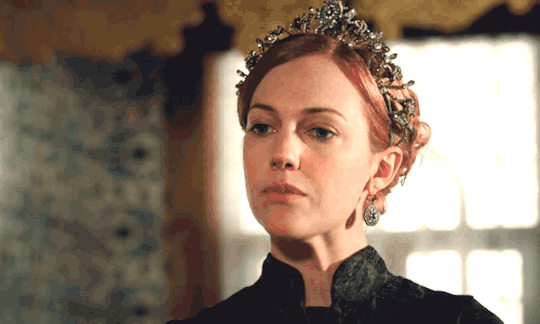






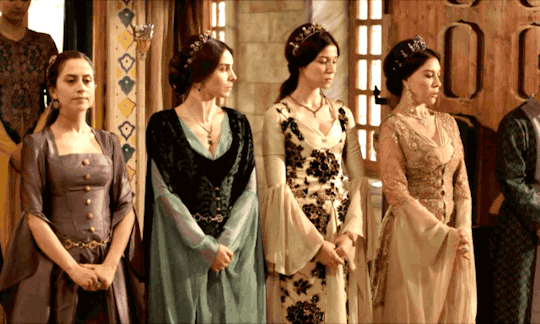





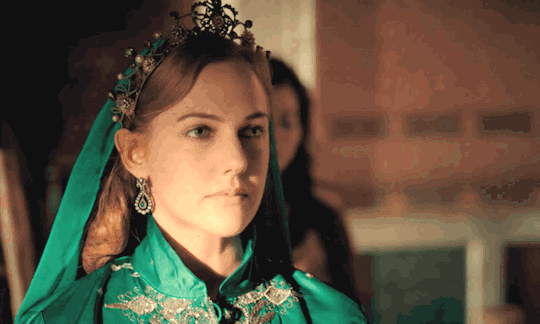


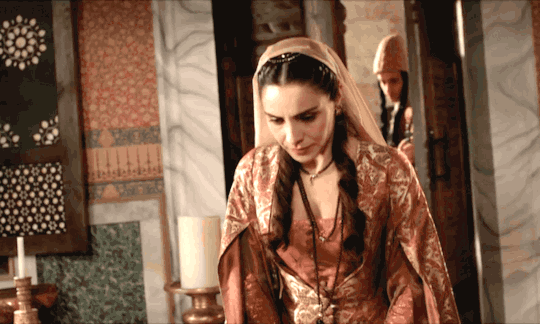


"According to the criterion of stipend, the haseki, or favorite concubine, enjoyed the greatest status in the imperial harem after the valide sultan. The haseki, a slave concubine and no blood relation to the reigning sultan, ranked higher than the sultan's own sisters and aunts, the princesses of the dynasty." - The Imperial Harem: Women and Sovereignty in the Ottoman Empire by Leslie P. Peirce
#Muhteşem Yüzyıl#Magnificent Century#mcedit#weloveperioddrama#perioddramaedit#period drama#perioddrama#historical drama#Muhtesem Yuzyil#MC Haseki AU#Hurrem Sultan#Hatice Sultan#Sah Sultan#Beyhan Sultan#Fatma Sultan#Mahidevran Sultan#Huge Disappointment#The Unjust Orders#Desperate Measures#The Years Pass#The Three Hour Battle#Death in the Hammam#ottoman history#history#New Shocks#Declaration of War#How Dare He?#A Feast in a Time of Mourning#I Will Rule the World#Unexpected Blow
166 notes
·
View notes
Text
Self insert OC from the Ottoman brotherhood.
Bestie left the male-harem and dodged the janniserries and went into the Assassins.
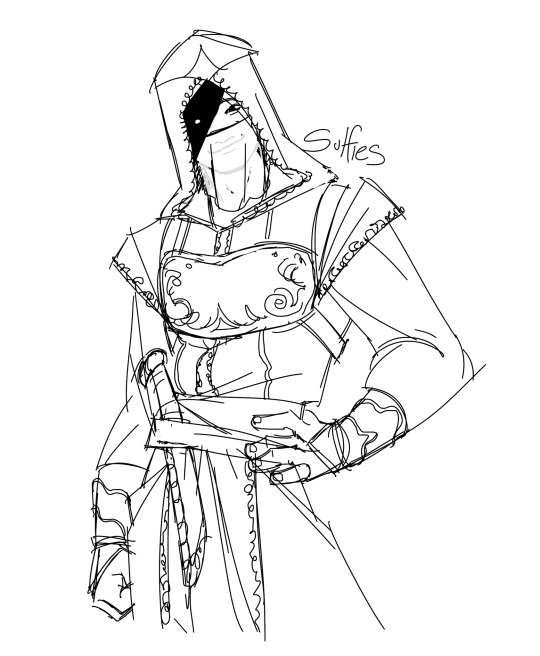

*kicking my feet writing in my dairy* and all the boys are inlove w me and they all love me so much and they wanna marry me and kiss me and im like the best and they love me the most and I love them and im the strongest most super duper feared assassin and im a lone wolf and im like the secret mentor no one knows about tee heee
#Ottoman queer history is my other hyperfix#I have written 15 pages for is on essays#he shall be the mirror of all of it…#oc#art#i am a twink irl…im sorry ill do better
64 notes
·
View notes
Photo


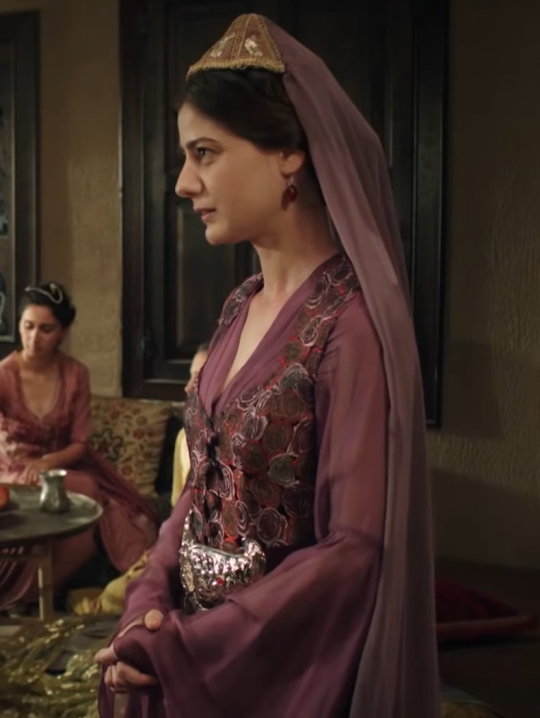

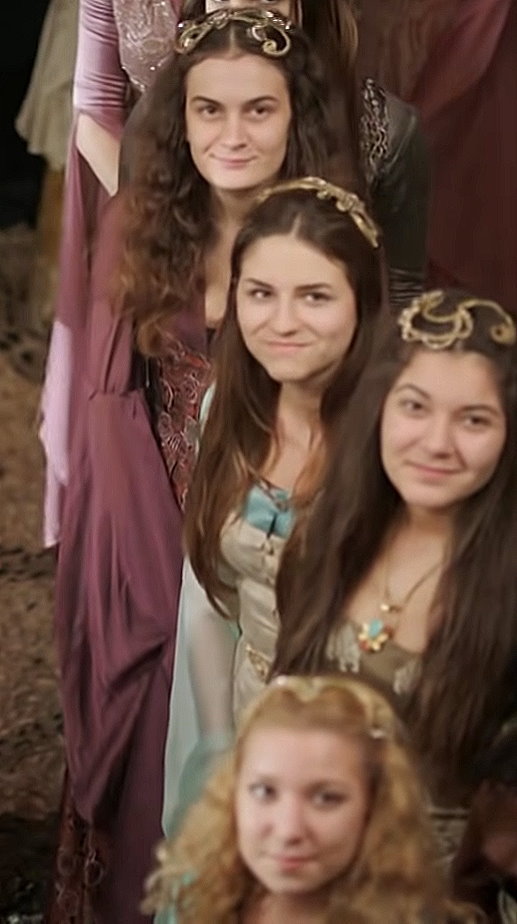

This purple kaftan was first worn by Nigar Kalfa in the second and third season of Magnificent Century. In between uses on her, it also appeared on an unnamed harem member in the second and third episode of the third seaosn. Towards the end of the third season, the kaftan was worn by Fahriye Kalfa. It appeared again on an unnamed harem member in the final episode of the series.
The spin-off Magnificent Century: Kösem saw the kaftan again on an unnamed harem member in the seventh episode of the first season.
The so far final appearance was on an unnamed harem member in the fifth episode of the second season of Netflix’ Rise of Empires: Ottoman.
#Magnificent Century#Muhteşem Yüzyıl#Magnificent Century Kösem#Magnificent Century Kosem#Muhteşem Yüzyıl: Kösem#Rise of Empires: Ottoman#period drama#costume drama#historical drama#Nigar Kalfa#Nigar Hatun#Unnamed Harem Members#Fahriye Kalfa#reused costumes#recycled costumes
10 notes
·
View notes
Text
Beyond the Walls of Topkapi

Eren is a turkish name anyway.
#magnificent century#muhteşem yüzyıl#magnificent tumblring#ottoman history#sultan suleyman#magnificent memes#attack on titan#attack on turkey#the war harem titan#they already have shown ESP in the show#why not#crossover memes#i will single handedly bridge the anime and MC fandoms by the power of memes#PaRHODOS Island
4 notes
·
View notes
Text
Byerly Vorrutyer visiting Ivan’s apartment’s

I adore these two character’s interactions 🤭
Creation notes:
- finished the linework and got really worried I’d fuck it up when I painted it so I made a photocopy and painted that instead of the original copy which was drawn on watercolor paper… unfortunately printer paper is not the greatest paint absorber so apologies for the lumpiness.
- also idk I messed up drawing byerly’s outfit. The shirts details are pretty but a little off from what I was going for and somehow during painting the pants now look like harem pants. (Outfit was supposed to be an attempt at a barrayaran folk-style suit/vest with a cut blending early 1800s suit silhouettes with open sleeve folk shirts. It didn’t quite work out.)
Here’s linework and a bonus doodle of instant groats:

Examples of the Greek folk bolero’s I was going for :
Similar shaped jackets exist in Albanian / Bosnian / ottoman folk styles
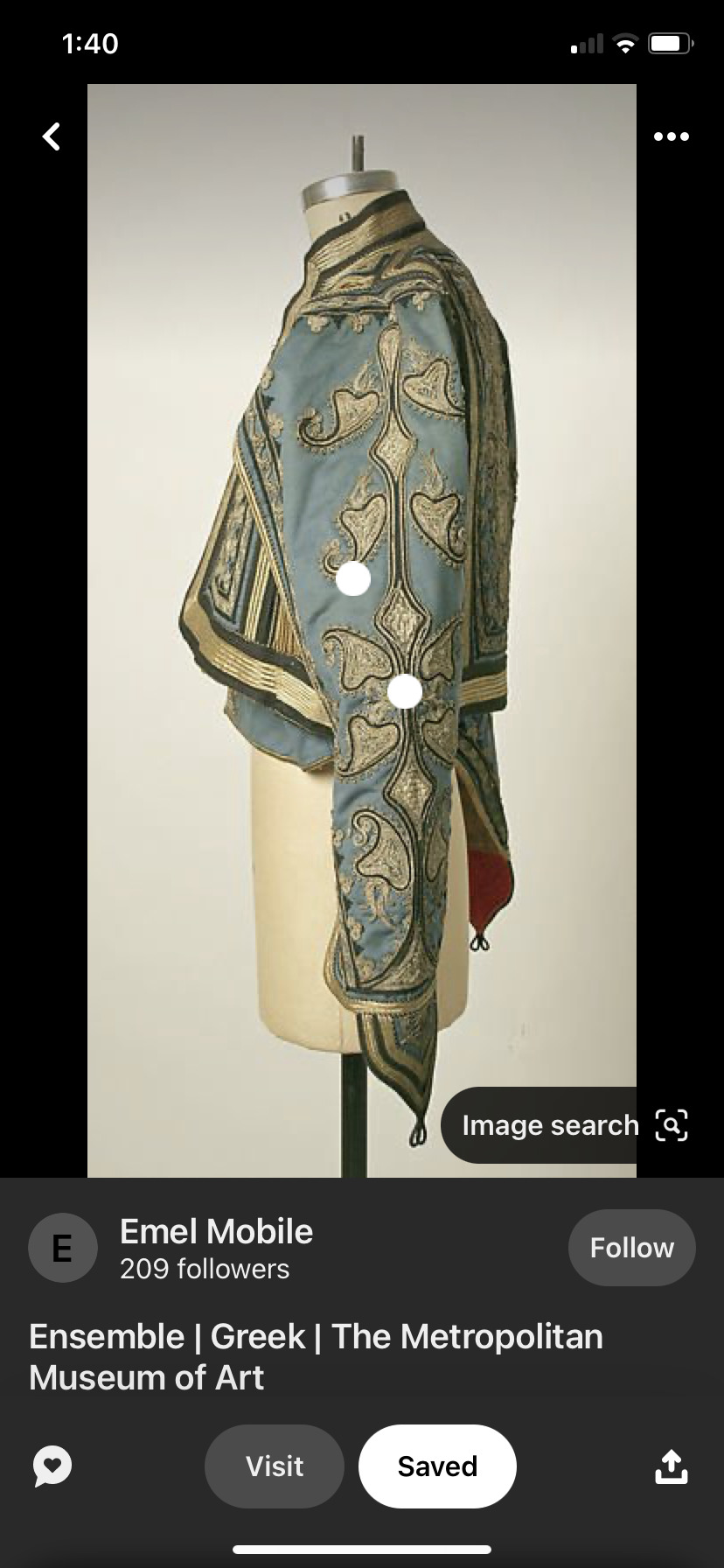
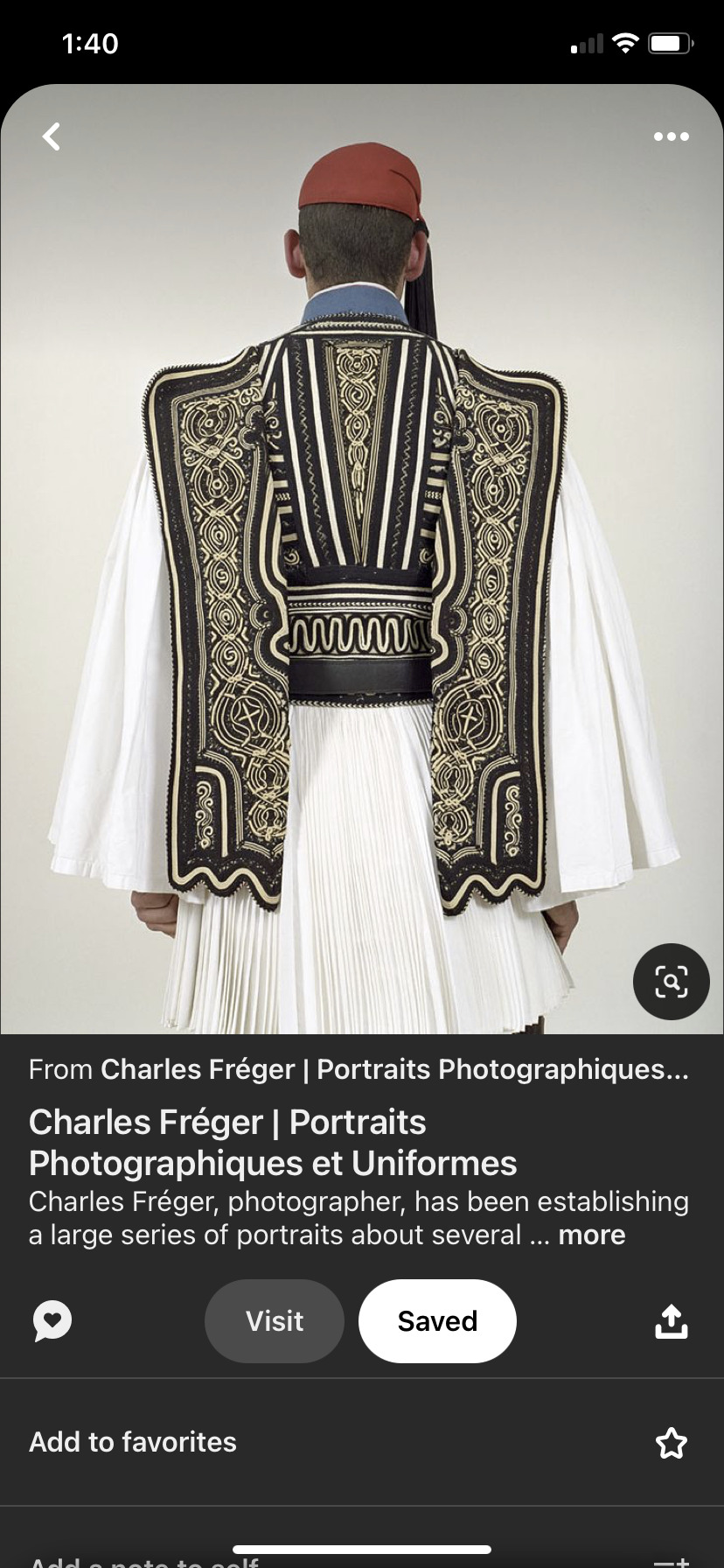
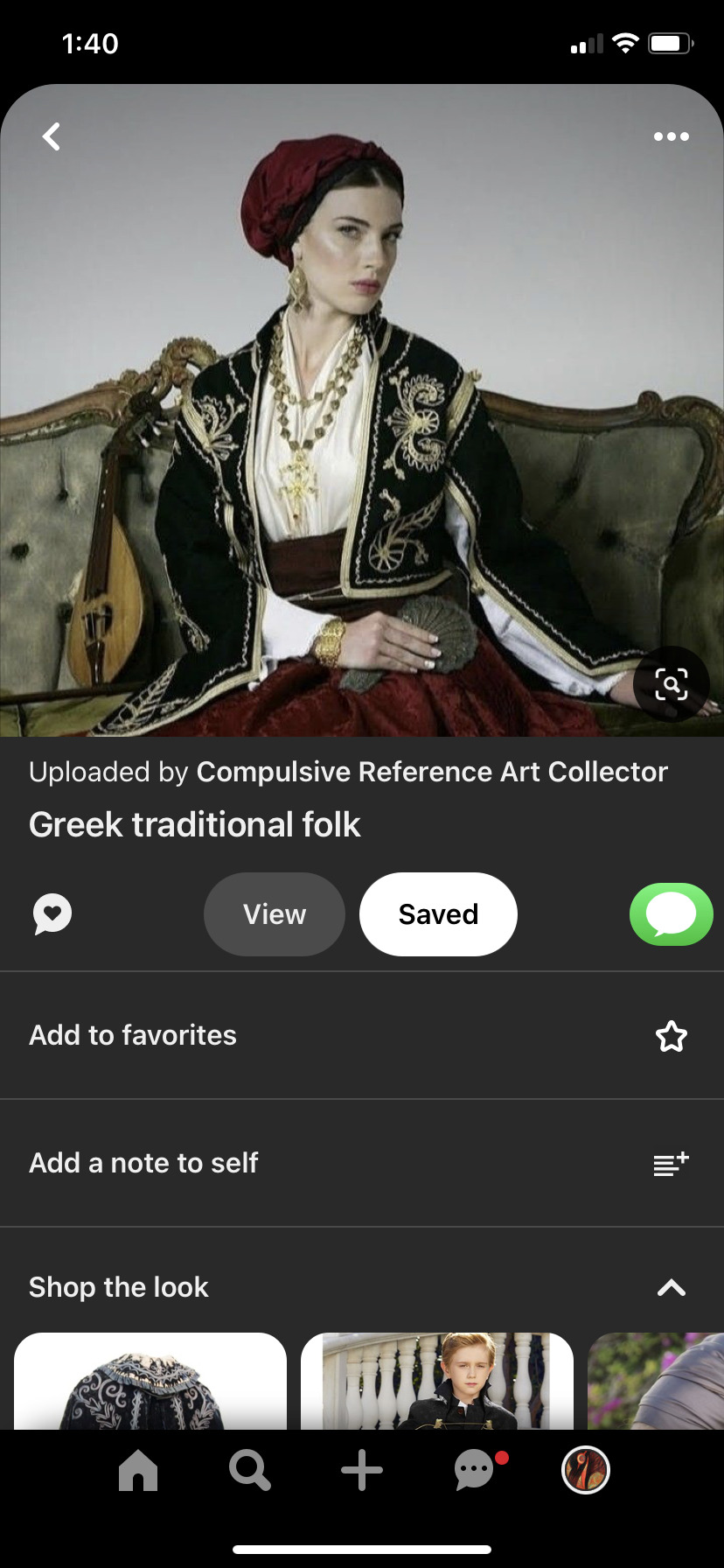
#byerly vorrutyer#ivan vorpatril#captian vorpatril’s alliance#vorkosigan saga#fanart#lois mcmaster bujold
95 notes
·
View notes